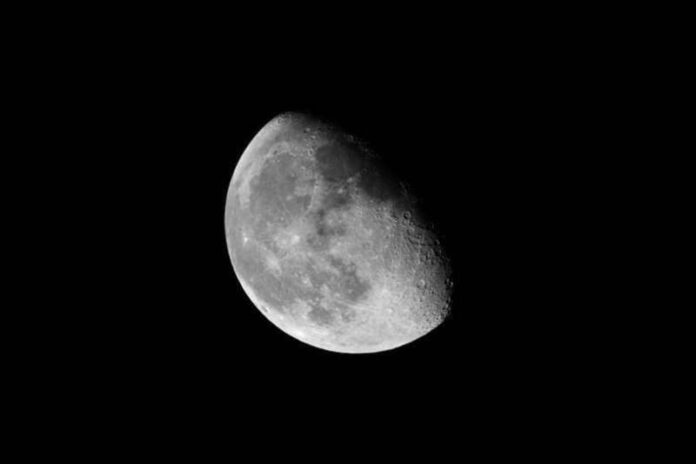Recent scientific data, issued by the Indian Chandrayaan-1 space mission, revealed a captivating link between planet Earth and the moon.
The study published in the scientific journal Nature indicates how high-energy electrons within the Earth’s plasma layer, a region within the magnetosphere, contribute to the weathering of the moon’s surface, and thus the possibility of contributing to the formation of water on it, which explains the mystery behind the presence of water ice on the moon.
The study claims that the Earth’s magnetosphere, which is responsible for protecting the planet from space weather and solar radiation, plays a major role in this pioneering phenomenon.
The study pointed out that when the solar wind interacts with the Earth’s magnetosphere, it sculpts the magnetic field into a comet-like tail on the night side. This tail region, known as the plasma sheet, contains a group of charged particles, including electrons and high-energy ions from Earth and solar wind.
Based on previous research that revealed the rusting of iron in the lunar polar region, due to oxygen present in the Earth’s “magnetic tail,” scientists turned their focus to studying surface weathering as the Moon passes through the Earth’s magnetotail.
Regarding how water ice is formed on the Moon by Earth’s electrons, the study’s lead researcher, Shuai Li, explains: “When the Moon is outside the magnetic tail, its surface is bombarded by solar wind, and inside the magnetic tail, there are almost no solar wind protons, which is likely that “The composition of water decreases to almost zero on the Moon.”
By analyzing remote sensing data collected by the Lunar Mineral Mapper during the Chandrayaan-1 mission between 2008 and 2009, researchers focused on changes in the composition of water during the Moon’s journey through the Earth’s magnetic tail.
One interesting discovery was that the composition of water in the magnetic tail appears to be consistent whether the Moon is inside it or not. This indicates the presence of water formation processes or sources not directly linked to solar wind protons, which opens new horizons for exploration in humans’ quest to understand the origins of existing water on the moon.























